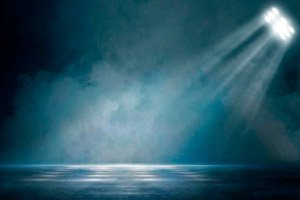
All iLive content is medically reviewed or fact checked to ensure as much factual accuracy as possible.
We have strict sourcing guidelines and only link to reputable media sites, academic research institutions and, whenever possible, medically peer reviewed studies. Note that the numbers in parentheses ([1], [2], etc.) are clickable links to these studies.
If you feel that any of our content is inaccurate, out-of-date, or otherwise questionable, please select it and press Ctrl + Enter.
Night light worsens impact of air pollution on stroke risk
Last reviewed: 09.08.2025

A new study in the Journal of the American Heart Association found that not only does outdoor light at night (LAN) increase the risk of cerebrovascular disease on its own, it also increases the harm from air pollution. Chronic exposure to air pollution is known to increase the risk of coronary heart disease, stroke, and other cardiovascular diseases (CVD). In recent years, “light pollution” has been added to the classic risk factors: artificial lighting at night (nighttime light, NTL) can suppress melatonin production, disrupt sleep and circadian rhythms, potentially affecting vascular function and metabolism.
Study design
- Cohort: Over 24,000 residents of Ningbo City, China, followed from 2015 to 2018.
- Exposure Rating:
- LAN - Satellite data with a resolution of 500 m estimated the average brightness of street lights.
- Air pollution - local Land Use Regression models calculated concentrations of PM₂.₅, PM₁₀ and NO₂.
- Outcome: newly diagnosed stroke recorded in medical records.
Key Results
- Independent effect of LAN: each one IQR (interquartile range) increase in street light luminance increased the risk of stroke by 22% (HR = 1.22; 95% CI 1.15–1.30).
- Independent effect of PM₂.₅, PM₁₀ and NO₂: corresponding increases in concentrations were associated with a 20–23% increase in risk.
- Synergy of LAN and NO₂: a significant additive and multiplicative effect was found in the interaction terms - at high NO₂ levels, additional LAN brightness gave an even greater increase in risk, and vice versa.
Mechanisms
- Circadian disruption and stress: Night light disrupts melatonin production and increases vascular inflammation.
- Oxidative and endothelial damage: The combination of LAN and aerosols causes more oxidative stress than either exposure alone.
"We have shown that city lights at night are not benign - they increase the vascular burden from exhaust and dust," comments lead author Dr Yu Wu.
Authors' comments
- Jiahui Zhang, MMed (lead author): “Our study is the first to combine two types of environmental stress—air pollution and artificial light at night—and demonstrate their cumulative effect on the risk of cardiovascular events.”
- Junru Wang, MMed: "Almost one-fifth of the effect of air pollution on CVD is mediated by light pollution-induced sleep disturbances, opening up new opportunities for intervention."
- Huihui Wang, PhD: “It is necessary to develop standards for a ‘quiet’ and ‘dark’ city, where night lighting is regulated as strictly as emissions into the atmosphere.”
- Yue Yang, PhD: "Clinical guidelines on sleep hygiene and environmental factors should be part of CVD prevention programs in future megacities."
Healthcare implications
- Urban planning: it is important not only to reduce emissions, but also to optimize street lighting (dark streetlights, screens with spectrum control) to minimize the harm of night light.
- Public advice: City dwellers can protect themselves from the double whammy by using blinds, dark sky campaigns and mobile apps to monitor light and pollution levels.
- Future research: Needs to be done to identify which LAN frequencies and intensities are particularly dangerous and to develop standards for “healthy” street lighting.
This work highlights how nighttime lighting and air pollution act in tandem to create an accelerated pathway to stroke, and calls for comprehensive solutions to protect the blood vessels of urban residents.
